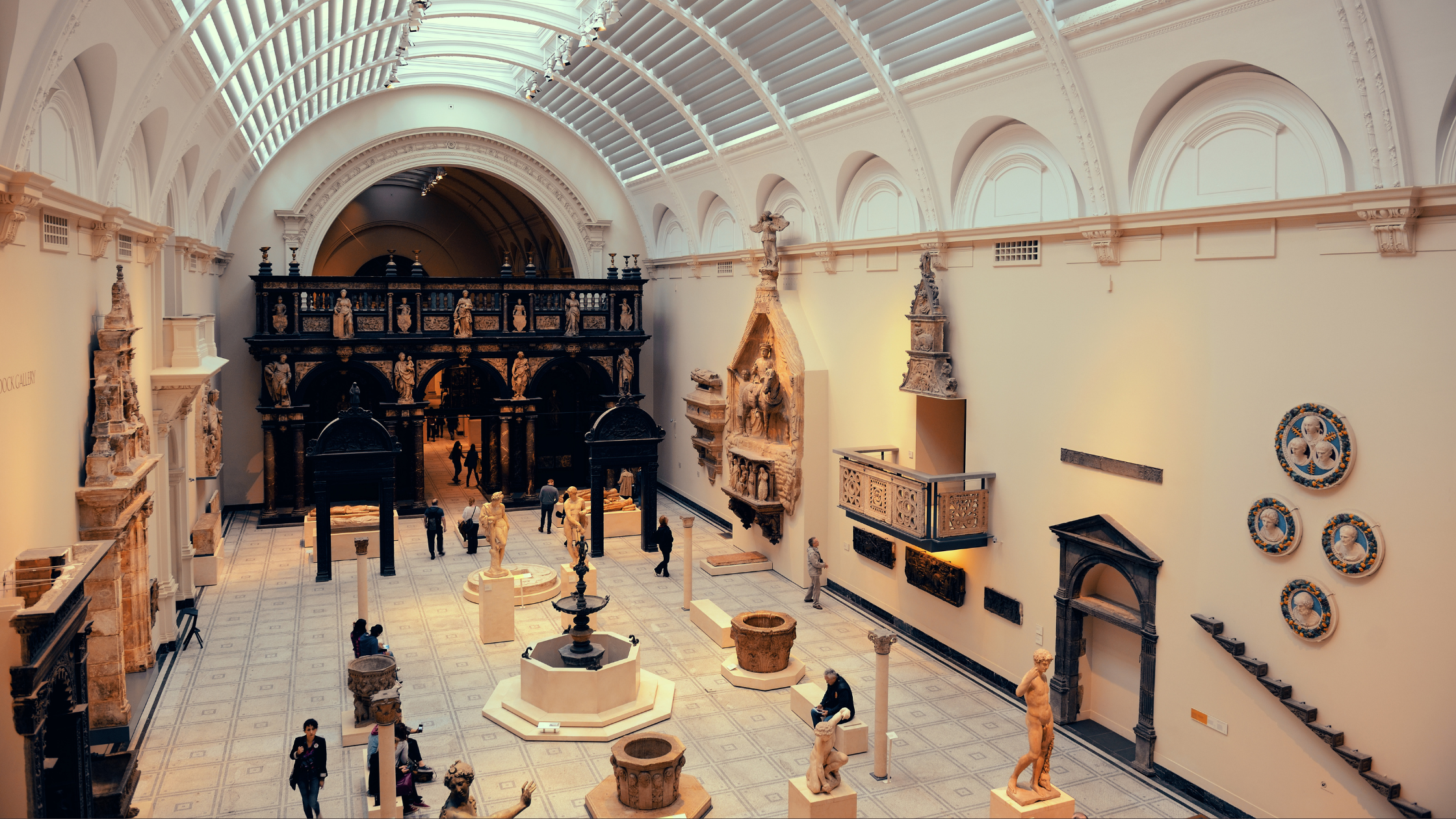Transforming the visitor attraction experience: Navigating the vendor selection maze
In an era where technology permeates our daily lives, it's no surprise that the world of visitor attractions has undergone a significant transformation, too. Gone are the days of ticket offices, paper maps, and static interpretation panels; today's visitor experiences are enriched by an array of digital technology that reduces friction and captivates and engages in ways that could only have been dreamt of in the past.
This shift has redefined our expectations when we visit museums, zoos, theme parks, historical sites, or any other visitor attraction. Digital is no longer a mere complement to the physical world; it has become an essential part of visitors' overall experience.

The problem with visitor attraction IT
Delivering this in a significant visitor attraction requires many IT systems. These encompass a wide range of functions, including ticketing and access control, customer relationship management (CRM) for personalised experiences, point-of-sale (POS) for both merchandise and food services, digital signage and wayfinding for navigation, audio and visual equipment for immersive exhibits, and Wi-Fi networks to facilitate visitor connectivity. Content management systems (CMS) are crucial for updating and managing digital content, while analytics tools provide valuable insights for optimising the visitor experience. Behind the scenes, inventory management and maintenance systems are vital for efficient operations.
But there is a problem. Most visitor attractions were around long before digital started to redefine the standard for visitor attraction experiences. This means that visitor attraction digital estates have grown organically through sporadic investments and without a holistic design.
This brings with it a number of significant business challenges: it slows down the deployment of new digital experiences, creates lost revenue due to friction in key commercial processes, increases the cost of business-as-usual IT, and makes cyber security and data privacy significantly more challenging to maintain. The lack of seamless communication and data sharing among these systems can lead to operational inefficiencies, too, such as duplicate data entry and errors, which can be both time-consuming and costly.
Moving beyond the basics towards what the leaders in this industry are doing well, disjointed systems can hinder an attraction's ability to provide a consistent and personalised visitor experience, as visitor data might be scattered across various platforms, making it challenging to tailor offerings or marketing strategies effectively. Those immersive, captivating visitor experiences that digital provides are pushed out by just trying to keep the lights on.
The solution
So, how do we solve these challenges? A holistic approach to designing a technical architecture is essential — even if the investment to make it happen is spread over many years. One essential part of this is selecting the right platforms for the right job and ensuring they can slot into the architecture effectively.
A recent project we worked on for a visitor attraction had over 20 third-party software/platform-as-a-service (SaaS/PaaS) systems that made up their new architecture. Selecting the right platforms to make this work effectively was a vital part of the task.
We're often on the other side of a procurement process — selling our own services. Supporting our clients with their vendor selection gives us an opportunity to see things from the other side of the fence. In doing so for various organisations over the last 20 years, we have taken several learnings into each consultancy project.

Here are some of the most valuable lessons we've learned:
Lesson 1: For more niche systems, you must accept that no system will meet all your requirements at once.
In the quest to select the perfect platform, particularly for niche functions like ticketing, a valuable lesson learned is the need for flexibility and realism. While it's essential to have a clear vision of your requirements, it's equally crucial to recognise that you aren't going to find a platform that meets every single need you have. Visitor attractions often have unique needs and constraints that may not be fully addressed by any single vendor — for example, if they are a charity or have a hotel on site. Therefore, the lesson here is to prioritise which requirements are critical and which are nice to have. Understanding that you might need to compromise on some aspects or integrate additional systems to meet some of your requirements is key.
Lesson 2: Focus on the foundation blocks first
Another critical lesson in the vendor selection process for visitor attractions is prioritising foundational systems such as ticketing and Customer Relationship Management (CRM). These systems are the backbone of visitor attraction operations, enabling you to maximise ticket sales (and therefore revenue), deliver efficient visitor entry, and provide data-driven personalisation before, during and after their visit. Selecting these platforms first is the best route through the complex web of dependencies when trying to select multiple platforms simultaneously.
Lesson 3: Ensure you have a clear methodology — both at a long and shortlist stage.
Our platform selection process involves initial research to identify potential platforms within a long list. The challenge is that these long lists can get very lengthy. Comparing many different platforms requires a very methodical approach, especially as you can only spend a limited time investigating each at this stage. Once at a shortlist stage, you have a similar problem. Given the many different requirements and attributes, you will want to assess each platform on your shortlist. Again, it will be tough to compare the systems well without a methodical approach and a good spreadsheet. Ultimately, a robust methodology simplifies decision-making and helps objectively evaluate vendors based on their suitability for the attraction's unique requirements.
Lesson 4: Don't go to a shortlist too early.
We've found that it is important not to rush into the shortlist phase prematurely. While narrowing down vendor options quickly may be tempting, it's important to take the necessary time to avoid deselecting a platform that may provide a good solution. Exploring a more comprehensive range of vendors during the long-list phase can reveal unexpected options and innovative solutions that may have otherwise been overlooked. By thoroughly understanding what's available in the market, you can make more informed and strategic decisions when transitioning to the shortlist phase.
Lesson 5: Speak to vendors as early in the process as possible
Engagement during the long-list phase can provide invaluable insights into a vendor's approach, capabilities, and alignment with your attraction's goals. We've found that communication with potential vendors early in the process is essential to making good vendor selection decisions — particularly in more niche areas where we haven't undertaken a platform selection recently or at all. Informal discussions allow you to very quickly understand what a provider offers (both in terms of the product and service), where they fit in the market and their perspective on how they compare to other vendors (which should always be taken with a pinch of salt). In some cases, vendors will tell you they aren't appropriate for the solution — which can save you much time going down the rabbit hole.
This early dialogue helps build relationships and allows you to clarify doubts and expectations, paving the way for a more collaborative and productive partnership. It's a lesson in proactive engagement that can save time and effort down the line, ensuring that you make well-informed decisions during the vendor selection journey.
Conclusion
The lessons we've explored highlight the importance of pragmatism, transparent methodology, and open communication throughout the process. By taking a more holistic approach to digital, including selecting the right vendors, visitor attractions can enhance their operational efficiency and elevate the overall visitor experience.
As technology continues to evolve, these lessons serve as guideposts to ensure that any digital transformation aligns seamlessly with the attraction's unique goals and the ever-evolving expectations of its visitors. In the digital age, where seamless and immersive experiences are paramount, getting vendor selection right is invaluable in shaping the future of visitor attractions.
We pride ourselves on the work we do for our clients in the leisure sector. To see how we’ve implemented these lessons into the work we do, you can view how we’ve exceeded expectations for our clients here.

With over 10 years in B2B marketing, Lexie specialises in acquisition, content strategy, and brand positioning. She's passionate about building strong foundations and approaches every challenge as an opportunity to innovate, test, and refine until it works.
